Landscape Photography’s Ultimate Filter Set
Lee Filters LEE100 Deluxe Kit Plus Review: The Filter System That Finally Makes Sense
The wind was absolutely howling across Kinder Scout last November, and I was crouched behind a gritstone boulder trying to swap filters on my Canon 5D Mark IV whilst my hands went progressively more numb. The old screw-on circular filters I’d been persisting with were being an absolute nightmare – dropping the step-up ring amongst the peat hags, wrestling with three different ND filters trying to stack them without vignetting, and watching my composition shift every time I touched the bloody things. It was whilst I was searching for said step-up ring in the gathering dusk that I finally admitted defeat and started researching proper filter systems. Six months later, the Lee Filters LEE100 Deluxe Kit Plus arrived on my doorstep, and I haven’t looked back since.
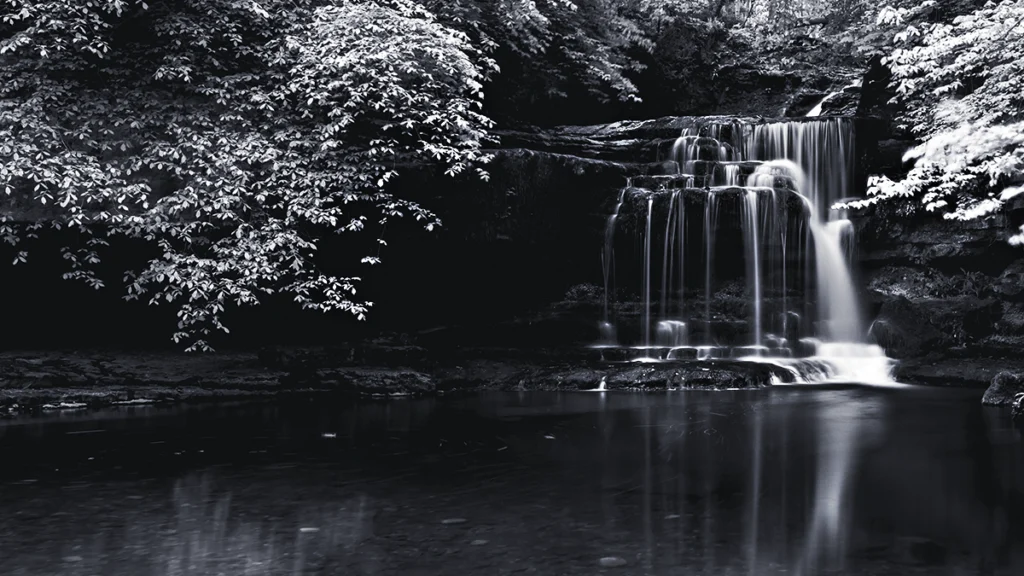
- A comprehensive collection to give you total control in nearly all photographic situations. With three ND grads, a polar…
- The LEE100 Filter System combines all the best aspects of our previous holder with enhanced features that deliver a fast…
- Our sturdy, lightweight, precision-engineered holder comes complete with three modular filter-guide blocks. Simply attac…
The Purchase Journey: From Sceptical to Converted
Like most Yorkshire folk, I’m naturally suspicious of expensive kit that promises to solve all your problems. At £699 for the Deluxe Kit Plus, this wasn’t exactly pocket change – that’s more than I paid for my Canon EF 24mm f/1.4L II USM. But after reading countless reviews and watching every YouTube video I could find, the consensus seemed clear: if you’re serious about landscape photography, a proper filter system isn’t a luxury, it’s essential.
The Lee system had been recommended by several photographers whose work I admired, and the fact that it’s manufactured right here in the UK was a selling point. There’s something reassuring about buying British-made gear, especially when you know it’s going to get properly battered on the fells. The Deluxe Kit Plus included everything I needed to get started: the LEE100 holder, three ProGlass graduated ND filters (0.6, 0.9, and 1.2), the LEE100 polariser, the famous Big Stopper, plus cleaning kit and three wide-angle adapter rings. For someone starting from scratch, it seemed like excellent value.
What finally convinced me was watching a landscape photographer swap between three different graduated filters in about ten seconds whilst balanced on a precarious rock outcrop in Scotland. With my old system, that same filter change would have taken five minutes and probably resulted in me dropping something expensive into a loch.
- The Little Stopper is a long exposure filter that reduces the amount of light entering your lens by six stops
- It is ideal for those low-light conditions at the beginning and end of the day (when a darker filter may prove too much)…
- By greatly extending exposure times, the Little Stopper has the effect of allowing anything that is moving in your image…
What I Love: Engineering That Actually Works
The Holder Design is Brilliantly Simple The LEE100 holder itself is a masterclass in practical engineering. Made from glass-filled nylon, it’s incredibly lightweight yet feels reassuringly solid. The modular filter guide blocks snap in and out with satisfying clicks, and the whole system mounts to your lens via adapter rings with proper metal threads. No plastic nastiness here that’ll strip the first time you over-tighten it.
The Locking Mechanism is Genius The dual-position locking knob was clearly designed by someone who actually uses filters in anger. Position one locks the holder to the adapter ring but allows rotation – perfect for positioning graduated filters. Position two locks everything solid so you can confidently slide filters in and out without the whole assembly shifting. After months of use, this has become second nature.
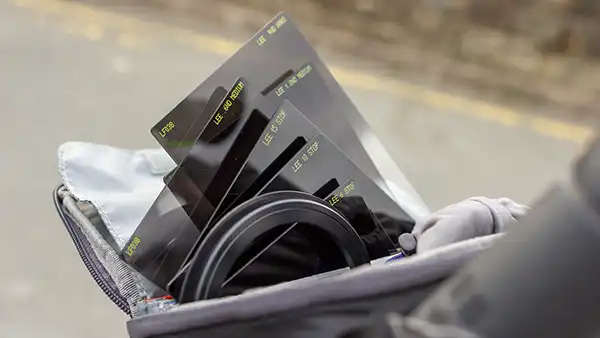
Understanding the Three Graduated Filters: Your Complete Toolkit
The Deluxe Kit Plus includes three specific graduated ND filters that have been carefully chosen to handle virtually any lighting scenario you’ll encounter in landscape photography. Understanding when and how to use each one has been crucial to getting the most from this system.
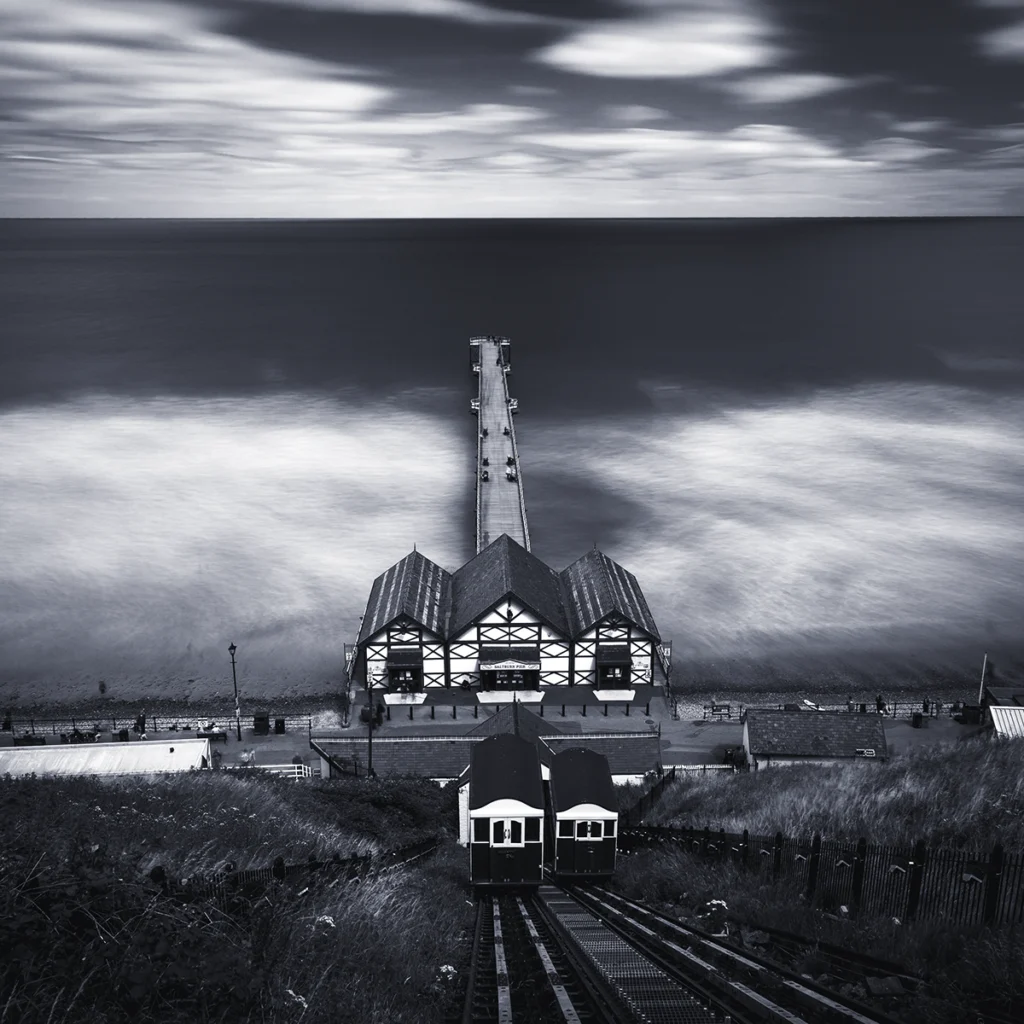
“Saltburn-by-the-Sea is a proper gem that should be on every photographer’s bucket list. The Victorian pier jutting into the North Sea and that iconic cliff railway create shots that are absolutely class – the kind of dramatic coastal scenes that make your camera sing. It’s Yorkshire’s best-kept photographic secret.”
0.6 Medium Grad (2-Stop Reduction) This has quickly become my most-used filter, and for good reason. The 0.6 designation means it provides a 2-stop exposure reduction, while “medium” refers to the gradual transition from dark to clear across the filter. This gentle graduation makes it perfect for uneven horizons where mountains, trees, or buildings protrude into the sky. I reach for this filter when there’s a moderate brightness difference between sky and foreground – typically early morning or late afternoon when the light is getting interesting but not extreme. The soft transition means you can position it quite freely without creating obvious lines in your image, making it incredibly forgiving for beginners and efficient for experienced photographers.
0.9 Hard Grad (3-Stop Reduction) The workhorse of the collection, this 3-stop filter features a much more pronounced transition line between the dark and clear areas. “Hard” graduation means the transition happens quickly, making it ideal for scenes with a distinct, flat horizon line – think seascapes, large lakes, or open moorland. I use this filter most often when shooting during golden hour or when storm clouds create dramatic contrast against a darker foreground. The key with hard grads is precise positioning – that transition line needs to sit exactly on your horizon, which is where the Lee holder’s rotation system really shines.
1.2 Medium Grad (4-Stop Reduction) This is the heavy hitter for extreme lighting conditions. At 4 stops of reduction, it’s designed for those challenging situations where you’re shooting directly into bright sun or dealing with brilliant white clouds against a dark landscape. The medium graduation combines the strong density with a gentler transition, making it surprisingly versatile. I’ve found it essential for sunrise and sunset shots where the sky can be 6+ stops brighter than the foreground. Despite the strong filtration, the medium transition means it works well even when the horizon isn’t perfectly flat – crucial for Yorkshire’s rolling landscape where hard grads can look unnatural.
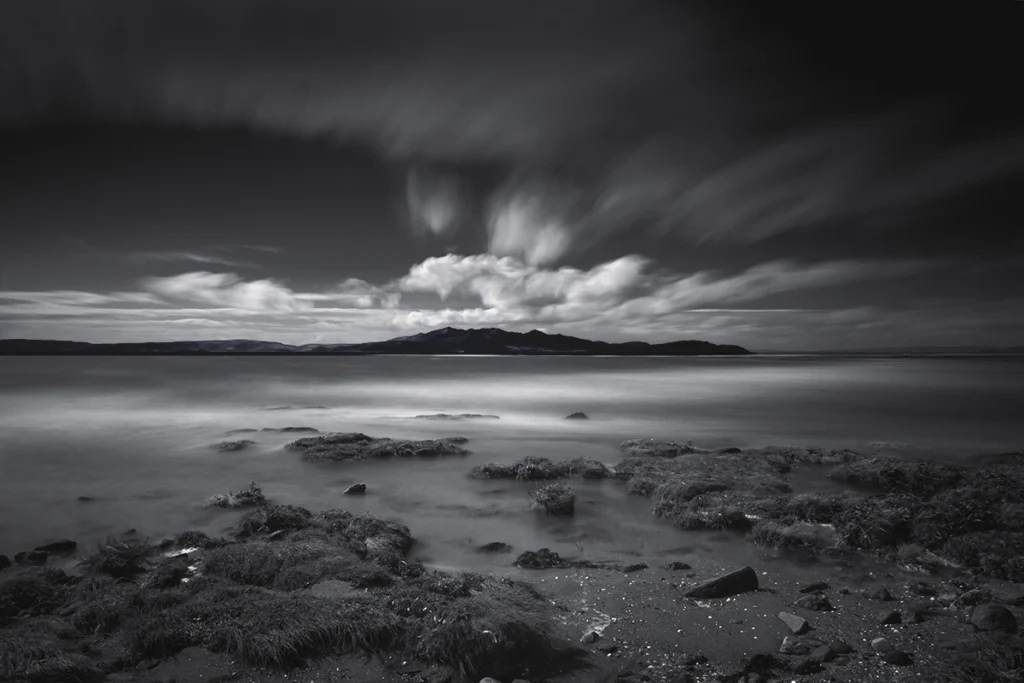
Stacking and Combining Filters One of the system’s greatest strengths is the ability to combine filters for even more control. I’ll often stack the 0.6 and 0.9 grads for a total of 5 stops when dealing with extreme contrasts, or combine any grad with the polariser to simultaneously control reflections and balance exposure. The precision-engineered holder makes this completely straightforward, with no light leaks or alignment issues.
ProGlass Technology Makes the Difference All three filters use Lee’s ProGlass construction, which maintains excellent colour neutrality even when stacked. I’ve compared these directly against cheaper alternatives, and the difference is immediately obvious – no colour casts, no loss of sharpness, and consistent performance across the entire filter surface. When you’re investing in a £699 system, optical quality can’t be compromised, and these filters deliver professional results every time.
The Big Stopper Lives Up to the Hype That famous 10-stop Big Stopper is genuinely transformative for long exposure work. I’ve used it to turn choppy seas into glass-smooth surfaces and racing clouds into ethereal streaks across the sky. The included storage tin is a nice touch – these filters are investments, and proper storage matters.
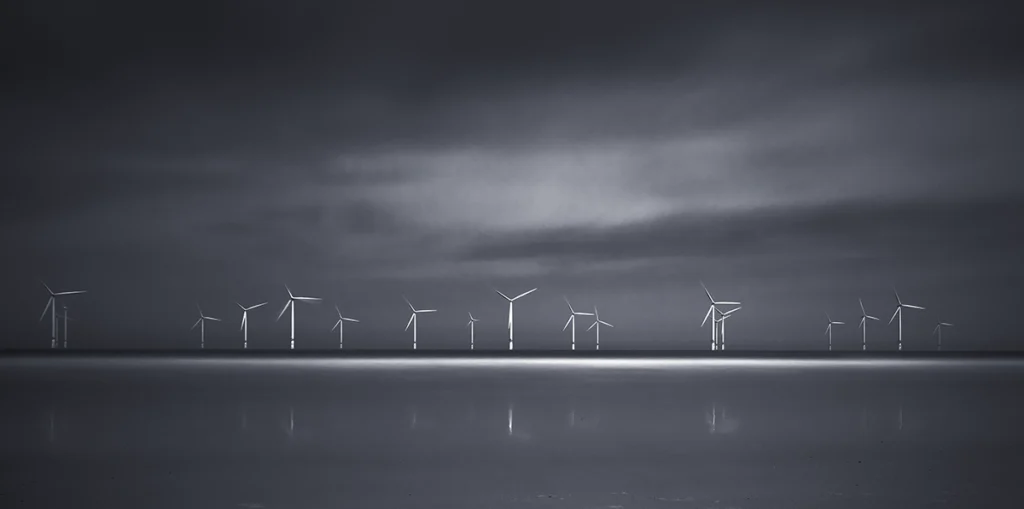
But where the Big Stopper and Little Stopper (6-stop) really earn their keep is in timelapse photography. Using a 6-stop ND filter for timelapses adds a wonderfully cinematic quality to the footage – you get those beautiful motion blur streaks in clouds and water that separate professional-looking timelapses from static, jerky amateur efforts. The motion blur smooths out the natural choppiness between frames, creating that flowing, dreamy quality you see in high-end documentaries.
There’s also an unexpected bonus that’s saved countless hours of post-processing: the longer exposures effectively eliminate birds in flight. Anyone who’s spent an evening editing timelapses will know the absolute heartbreak of discovering a perfect sunset sequence ruined by a single seagull photobombing every twentieth frame. With a 6-stop filter extending each exposure to several seconds, any birds simply become invisible – they move through the frame too quickly to register. It’s like having a built-in bird eraser, which is frankly worth the price of admission alone for anyone who’s ever tried to manually clone out a persistent pigeon from 400 individual frames.
The Lee Filters App is a Game-Changer One aspect of the Lee system that’s often overlooked is their excellent Stopper Exposure app, available free on iOS and Android. This isn’t just marketing fluff – it’s genuinely useful kit that’s become essential to my long exposure workflow. The app calculates precise exposure times for each of Lee’s ND filters, taking the guesswork out of what can otherwise be frustrating mental arithmetic in challenging conditions.
My typical workflow starts by composing the shot and getting my base exposure reading in manual mode without any filters attached. I’ll then input this into the Lee app along with which filters I’m planning to use – say the Big Stopper for a 10-stop reduction. The app instantly calculates the new exposure time, accounting for reciprocity failure and giving me a precise countdown timer.
Here’s where the real magic happens: I switch the camera to bulb mode, set a 2-second self-timer delay (crucial for avoiding camera shake when pressing the shutter), and enable long exposure noise reduction in the camera settings. The LENR function is absolutely essential when shooting exposures longer than 30 seconds – it takes a second ‘dark frame’ exposure of the same duration to map and eliminate hot pixels that would otherwise show up as bright spots in the final image.
The 2-second delay might seem trivial, but it’s transformed my hit rate for sharp long exposures. Even with the camera on my solid Benro Tortoise tripod, that tiny bit of camera shake from pressing the shutter can ruin a 4-minute exposure. The app’s countdown timer then guides me through the entire exposure, so I know exactly when to close the shutter without having to guess or constantly check my watch.
This systematic approach has eliminated the frustration of ruined shots due to incorrect exposures or camera shake. When you’re dealing with the Big Stopper’s 10 stops or the Super Stopper’s 15 stops, precision matters – a 30-second exposure becomes 8 minutes, and getting that wrong means starting over. The Lee app removes that uncertainty entirely.
What Could Be Better: Honest Limitations
The Price is Eye-Watering (But It’s the Last Filter System You’ll Ever Buy) Let’s not pretend otherwise – £699 is a serious chunk of change. Add in the fact that you’ll want additional adapter rings for different lenses (another £25-30 each), plus the inevitable expansion with filters like the Little Stopper and Super Stopper at £120 each, and you’re looking at over £1,000 to get a comprehensive system. For someone just starting out in landscape photography, that’s a significant investment that needs serious consideration.
But here’s the thing that’s taken me months to fully appreciate: this filter system will genuinely outlast everything else in your camera bag. I’m already on my second camera body, I’ve upgraded lenses twice, and I’m eyeing up a lighter tripod – but these filters? They’ll still be optically perfect when I’m shooting with whatever replaces the Canon 5D Mark IV in ten years’ time. The glass is that good, the holder that robust, and the 100mm standard that universal. It really is a one-time purchase that will span your entire landscape photography journey.
The Weekly Value Principle What’s made the investment feel worthwhile is how frequently I actually use the system. When I was considering the purchase, £699 seemed astronomical. But I’m out with my camera most weekends, plus regular evening shoots during good weather – easily 60+ sessions per year. At that rate, the system has already paid for itself at under £12 per shoot in the first year alone. By year three, I’ll be down to about £4 per use, and by year five it’s essentially free. Compare that to the running costs of travel, fuel, and camera maintenance, and the Lee system becomes one of the most cost-effective investments in my kit bag.
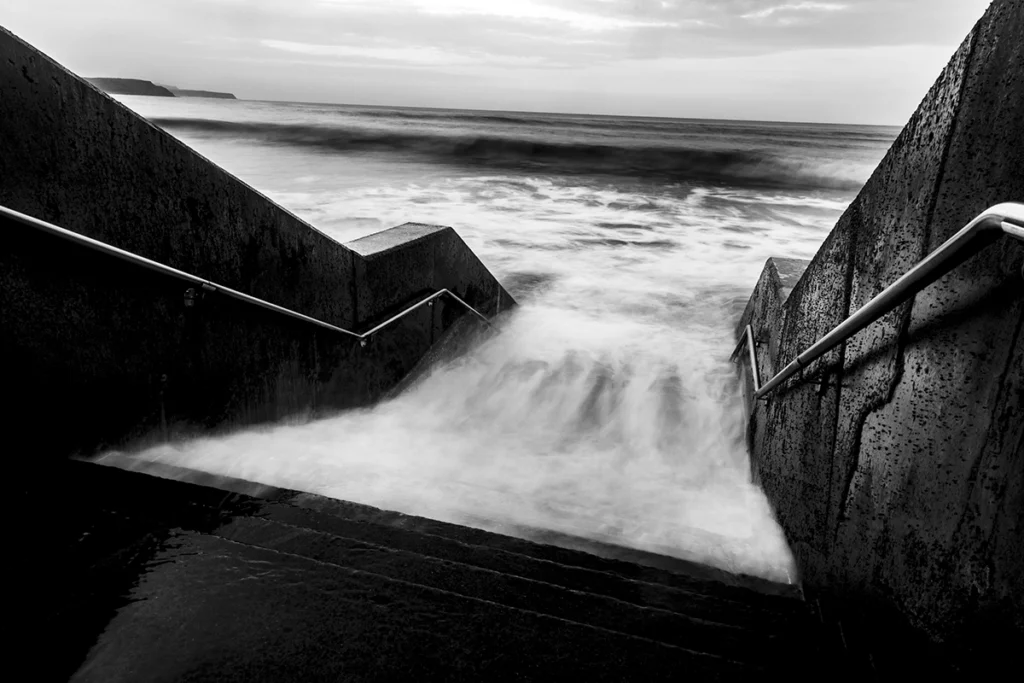
Every time I slide those filters into the holder and nail a shot that would have been impossible without proper grad control, I get a little reminder of why this system was worth every penny. It’s not just about owning expensive gear – it’s about tools that fundamentally improve your photography and get used consistently rather than gathering dust on a shelf.
The Polariser Takes Getting Used To Whilst the clip-on polariser is undoubtedly clever, I found it took several outings to get comfortable with the attachment mechanism. In cold conditions with gloves on, getting it properly clipped can be fiddly. I’ve since bought a separate protective case for the polariser and keep it apart from my MindShift Gear Filter Hive – it’s just too easy to damage those clips.
- Fits six flat graduated neutral density filters up to 4×6” (100×150 mm) and six round filters up to 82 mm diameter, incl…
- External pouch: 8.1” W x 5.3” H x 3.9” D (20.5 x 13.5 x 10 cm), Removable filter insert: 7.3” W x 4.3” H x 3.1” D (18.5 …
Filter Cleaning is Constant With three or four pieces of glass in front of your lens, any spray or condensation is magnified. I find myself cleaning filters far more frequently than when I used a single screw-on ND. The included cleaning cloth is good, but you’ll want to invest in several spares.
Weight Adds Up Whilst the holder is lightweight, the full kit with multiple filters does add noticeable weight to your lens setup. When I’m carrying my Canon EF 70-200mm f/2.8L II USM for wildlife shots, every gram counts, and the filter system definitely makes itself known.
Real-World Performance: From Peak District Grit to Yorkshire Coast Drama
Over the past eight months, this filter system has been with me across the Peak District’s gritstone edges, through the Yorkshire Dales’ limestone country, around the Lake District’s dramatic fells, and along Yorkshire’s spectacular east coast. It’s performed brilliantly in conditions ranging from baking summer heat on the Pennine Way to driving sleet coming off the North Sea.
Peak District Dawn Patrol During a crisp February morning on Stanage Edge, the system really proved its worth. The contrast between the rising sun illuminating the gritstone and the shadowed Dark Peak moorland below was extreme – easily a six-stop difference. Using the 0.9 hard grad, I was able to balance the exposure perfectly whilst retaining detail in both the golden rock face and the dark heather moor. The speed of the Lee system meant I could capture multiple compositions as the light changed across the Derwent Valley, something that would have been impossible with my old setup.
Yorkshire Dales Limestone Drama The real test of the medium grads came during a summer evening shoot around Malham Cove. The limestone pavement creates incredibly complex lighting with deep shadows between the clints and brilliant highlights on the exposed rock. The 0.6 medium grad was perfect for balancing the bright evening sky against the foreground detail without creating obvious transition lines across the uneven horizon. Being able to rotate and reposition the filter precisely whilst maintaining the holder position made all the difference.
Lake District in Full Flow Working around Buttermere and Crummock Water during the autumn storms, the polariser proved absolutely essential. The ability to cut through reflections on the water surface whilst simultaneously controlling the sky exposure with a graduated filter transformed shots that would otherwise have been impossible. The clip-on polariser system meant I could adjust reflection control in seconds as the light changed across the fells, without disturbing my carefully positioned grad filters.
Yorkshire Coast Adventures Perhaps the most challenging conditions came during winter sessions along the Yorkshire coast between Whitby and Robin Hood’s Bay. The combination of salt spray, fierce winds, and rapidly changing light demands equipment that just works without fuss. The Lee system excelled here – the filters cleaned easily even when caked with sea salt, and the locking mechanism worked perfectly even with frozen fingers inside winter gloves. Those dramatic North Sea skies with their towering cumulonimbus clouds were made for the Big Stopper, turning choppy seas into ethereal mist whilst keeping the cloud structure sharp and defined.
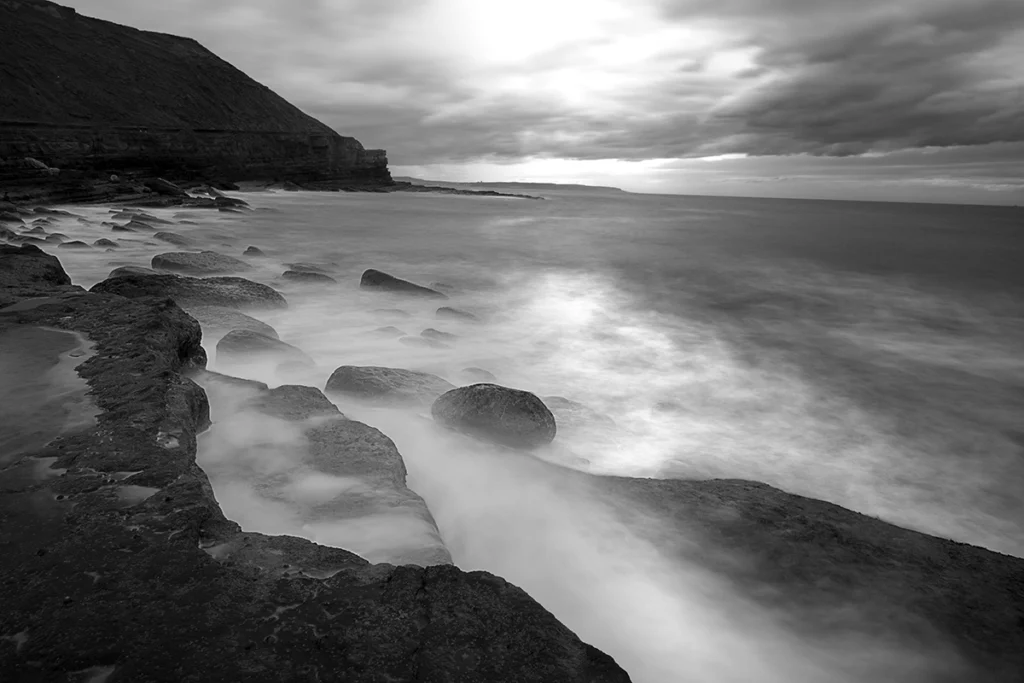
Gear Integration: Playing Nicely with the Rest of the Kit
The Lee system integrates beautifully with the rest of my camera gear. On my Canon 5D Mark IV with the Canon EF 24-105mm f/4L USM, the system feels balanced and never front-heavy. The 77mm adapter ring fits this lens perfectly, whilst my Canon EF 24mm f/1.4L II USM uses the included 82mm ring. Both setups work flawlessly.
Storage has been solved by the MindShift Gear Filter Hive, which keeps all my rectangular filters organised and protected. The Little Stopper and Super Stopper that I’ve since added fit perfectly alongside the original kit filters. Only the polariser gets separate treatment in its own protective case – those clips are just too vulnerable to damage in a communal storage system.
When packed in my Lowepro PhotoSport Backpack PRO 70L AW III for longer trips, the complete filter system takes up minimal space. The holder clips to the outside of my camera when packed in the GearUp PRO XL camera insert, and the Filter Hive slots neatly into a side pocket. Even on multi-day trips carrying my full camping kit including the MSR Access 2 tent and Rab Mythic 600 sleeping bag, the filter system doesn’t feel like a burden.
For pure landscape work, I’ll often pair the Lee system with my Benro Tortoise tripod and either the Canon EF 24mm f/1.4L II USM for wide vistas or the Canon EF 70-200mm f/2.8L II USM for isolating distant peaks. The system works equally well with all focal lengths, though I find the graduated filters most useful on wider lenses where foreground/sky balance is more critical.
Alternative Options: What Else Should You Consider?
NiSi 100mm V6 System (£380-420) NiSi’s offering is slightly cheaper and includes some clever innovations like their Enhanced CPL and variable ND options. The build quality is excellent, and many photographers swear by their colour neutrality. However, the Lee system’s British manufacturing and long-term reputation for support give it the edge for me.
Breakthrough Photography X4 System (£350-400) An American alternative that’s gaining popularity, particularly for their excellent circular polarisers. The X4 rectangular system is newer to market but shows promise. The filters are optically excellent, but the holder system feels less refined than Lee’s decades of development.
Cokin Z-Pro System (£200-300) The budget option that many photographers start with. Whilst significantly cheaper, the optical quality isn’t in the same league as Lee’s ProGlass filters. The holder is functional but lacks the precision engineering of the Lee system. Good for learning, but you’ll likely upgrade eventually.
H&Y K-Series (£300-380) A relative newcomer offering innovative features like magnetic filter attachment. The optical quality is very good, and the magnetic system is undeniably clever. However, I worry about long-term reliability of the magnetic mechanism in harsh conditions, and replacement parts availability isn’t as established as Lee’s.
The Bottom Line: An Investment in Better Photography
After eight months of intensive use, the Lee Filters LEE100 Deluxe Kit Plus has transformed my landscape photography. The combination of optical excellence, practical design, and operational speed makes it worth every penny of that eye-watering price tag. Whilst £699 is serious money, it’s genuinely the last filter system you’ll ever need to buy.
When I think about the gear I’ve replaced over the years – camera bodies every 3-4 years, lenses when something better comes along, tripods when I decide I need something lighter or more stable – these filters will outlast them all. The optical glass is built to professional standards that won’t degrade, the holder mechanism is robust enough to handle decades of field use, and the 100mm standard ensures compatibility with future lens systems. It’s one of the few pieces of photography gear that truly represents a lifetime investment.
The system has made techniques that were previously frustrating or impossible into routine parts of my workflow. Balanced exposures in extreme lighting conditions, creative long exposures, and rapid adaptation to changing light are now standard rather than special occasions. The time saved on location and the consistency of results more than justify the investment, and knowing I’ll never need to replace the system removes any lingering buyer’s remorse.
My only regret is not making the switch sooner. The Lee system has that rare quality of making you wonder how you ever managed without it. If you’re serious about landscape photography and tired of wrestling with inferior filter systems, this is the upgrade that will genuinely improve your photography. Just be prepared for the initial shock to your bank balance – it’s worth every penny, but those Yorkshire sensibilities still make me wince slightly when I think about the cost.
I’m already eyeing up additional filters to expand the system – the 0.3 soft grad looks useful for subtle sky control, and a reverse grad might be worth trying for sunrise/sunset work. Having already added the Little Stopper (£120) and Super Stopper (£120) to my collection, I can confirm the system’s modularity is genuinely useful rather than just marketing speak. That’s perhaps the best endorsement I can give: despite the significant initial investment, I’m actively planning to spend more money on this system. For a tight-fisted Yorkshireman, that’s about as ringing an endorsement as you’ll get.
SCORE
Check out the Lee Filters Website



